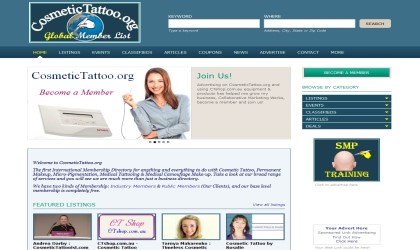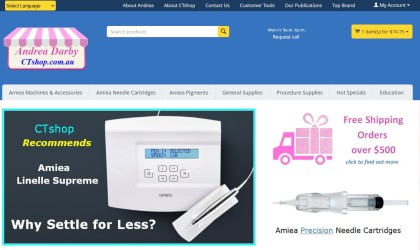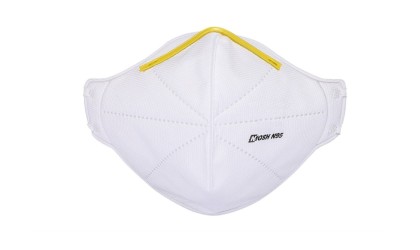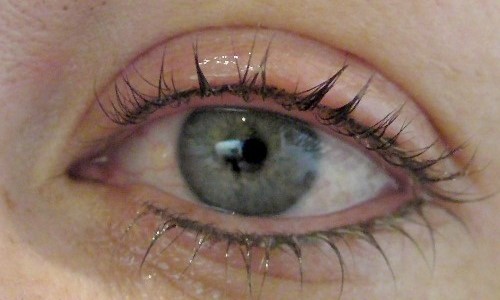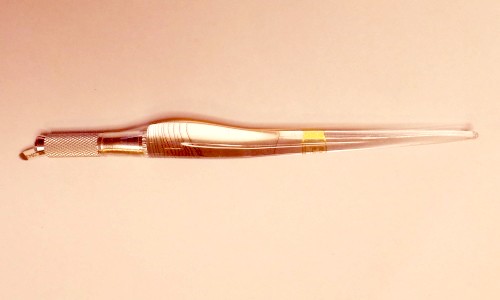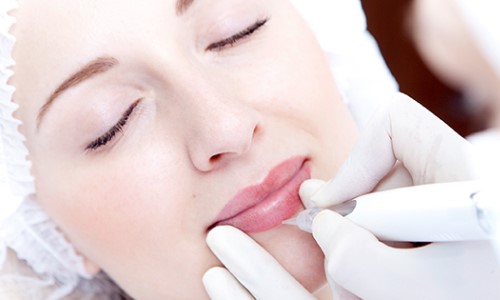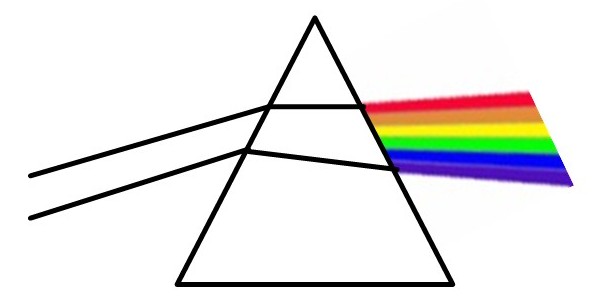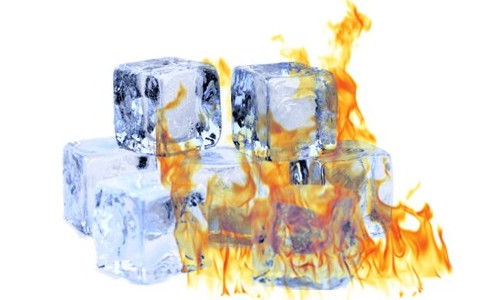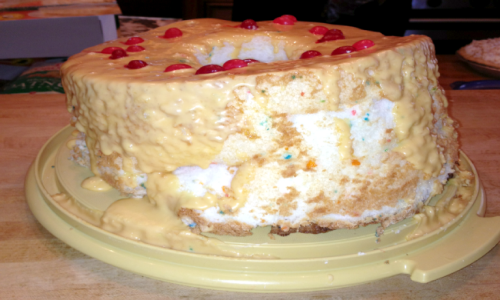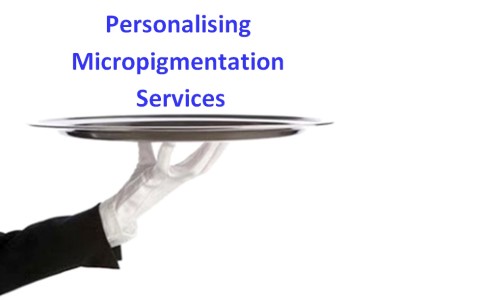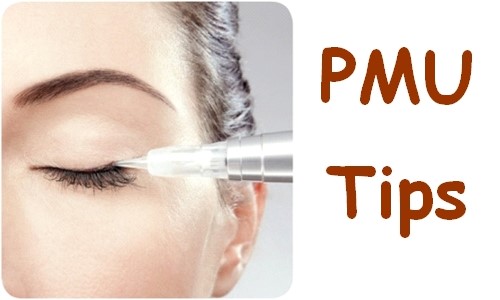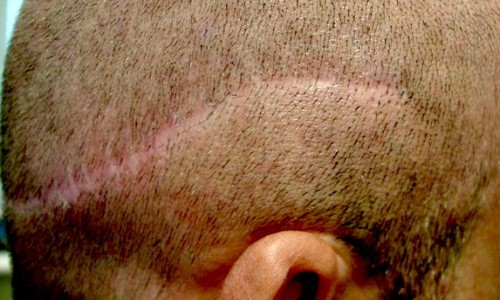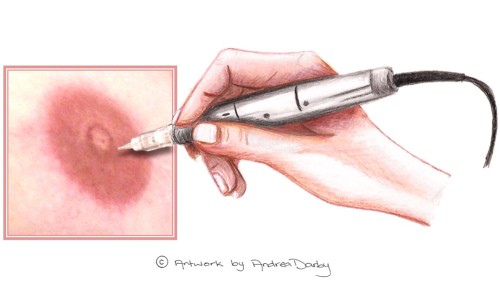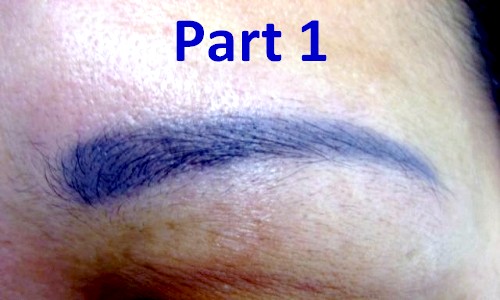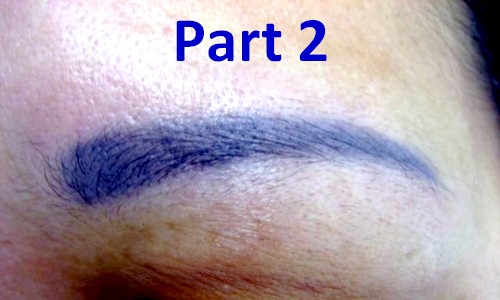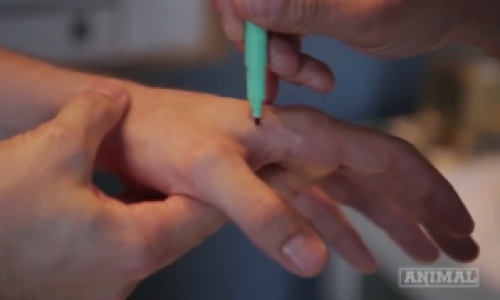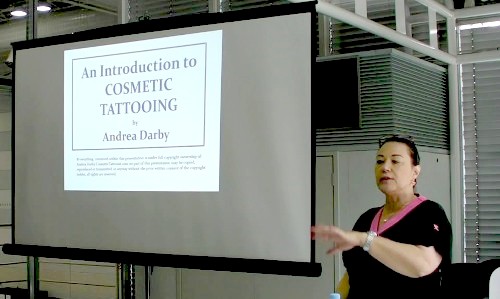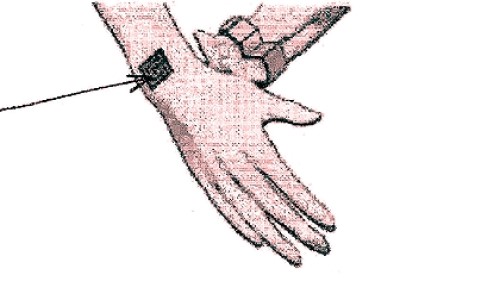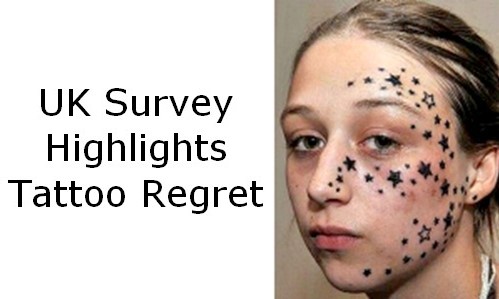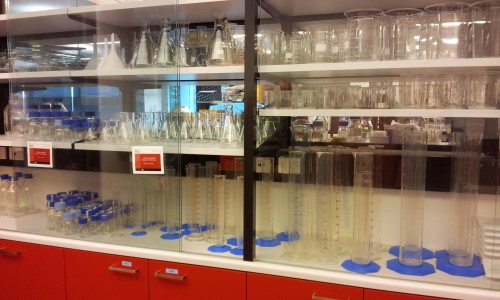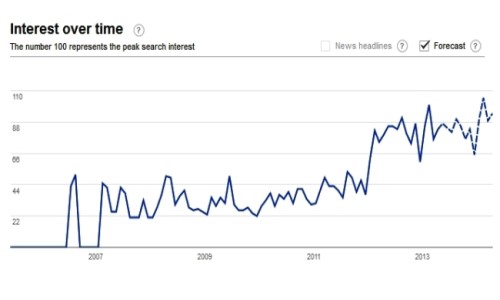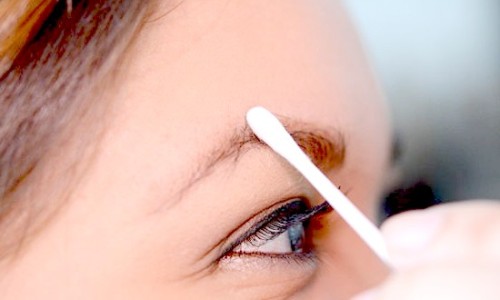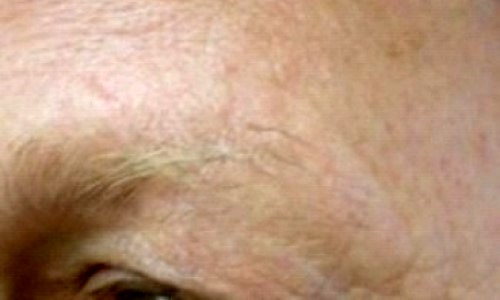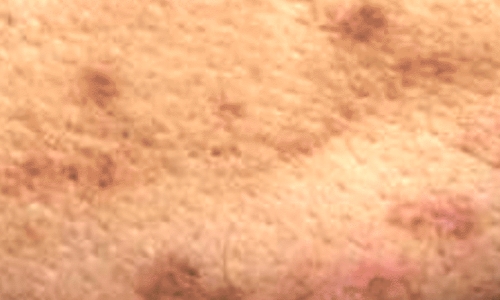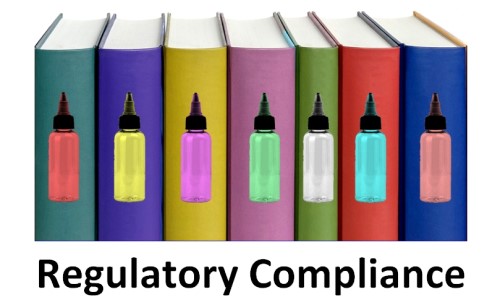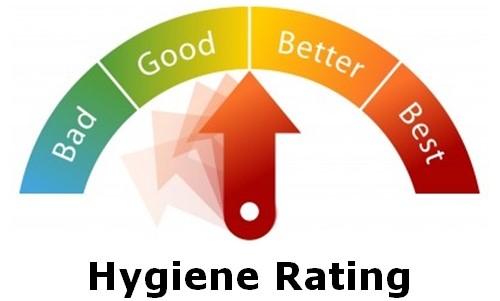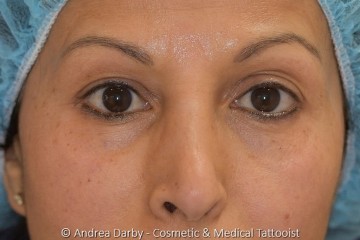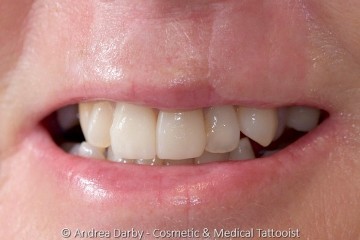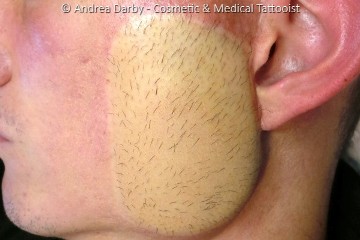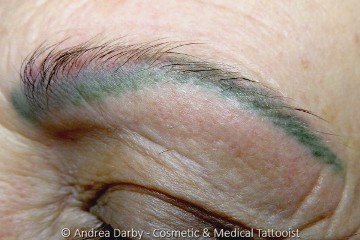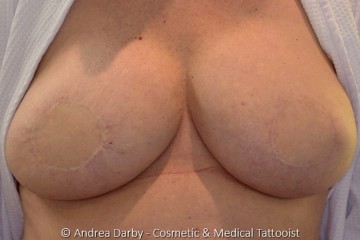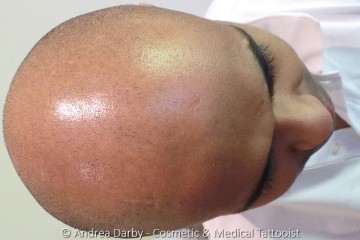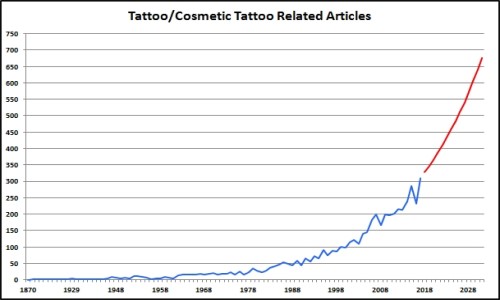Cart is empty
Personal Protective Equipment - Are You Covered?
23/01/2014
by Derek Darby RN - Australian Registered Health Practitioner & Andrea Darby - Master Medical Tattooist
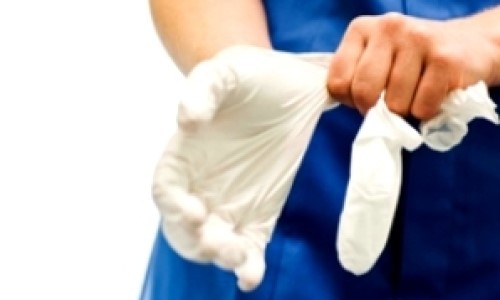
The regulatory requirements for the use of Personal Protective Equipment (PPE) by Cosmetic Tattooists differs from country to country and sometimes even within different states and districts, it is important to familiarise yourself with the health authority requirements for your location to ensure that you are in compliance with your local acts and regulations.
▼ Continue Reading ▼
|
This article draws upon regulatory publications from a variety of geographical locations as well as research from the medical, nursing, and health literature, in addition to relevant industry publications in an effort to compile some universal guidelines for the wider industry.
During a cosmetic tattooing procedure there is the potential for splattering of particles of bodily fluids and solids from the client (blood, saliva, tears, mucous, and skin cells etc) which may also be mixed with pigments and topical anaesthetics. The amount of splatter of bodily fluids & solids can differ significantly between tattoo devices, for example coils and rotary pen tattoo equipment are likely to produce far more splatter than the modern high quality needle cartridges systems that encase the needle in a snug fitting module. The modern cartridge systems have less exposed needle surface and less sideways oscillation of the needle which reduces the imprecise skin tearing and needle flicking that can occur with the older needle systems1.
Experiments conducted on animals introducing contaminated droplets of sera placed into the eye and mouth of the test subjects both induced HBV infection2. During a cosmetic tattoo procedure the technician is often working with their face in close proximity to the area of skin that they are tattooing. If bodily fluids containing blood born or other infectious diseases were to splash onto the technicians mucus membranes of their eye, mouth, nose, or onto open skin defect (sore, cut or abrasion etc) or if aerosol particles were inhaled into the nose, mouth, throat and lungs of the cosmetic tattooist then there would be the potential for the transfer of a blood borne communicable disease from the client to the tattooist. The technicians clothing can also easily become contaminated with small particles of bodily fluids and solids that splatter during the tattoo procedure, for the reasons described above the type of personal protective equipment required may differ depending on the equipment that the tattooist is using. Using the right kinds of personal protective equipment is essential to protect both the technician and the client from cross infections and particularly for preventing the transfer of serious blood borne communicable diseases such as Hepatitis B Virus (HBV), Hepatitis C and Human Immunodeficiency Virus (HIV).
The World Health Organisation have also produced the publication 'Standard Precautions in Health Care'5 which provide general principles which "are meant to reduce the risk of transmission of blood-borne and other pathogens from both recognized and unrecognized sources". Here in Victoria Australia we have the 'Public Health and Wellbeing Act 2008'6 and the associated 'Public Health and Wellbeing Regulations 2009'7, the 'Occupational Health and Safety ACT 2004'8, 'Health (Infectious Diseases) Regulations 2001'9, and other specific publications such as the 'Health Guidelines for Personal Care and Body Art Industries'10 all of which have provisions that are relevant to cosmetic tattooing and PPE. In addition to the various federal and state acts and regulations many local government health departments have their own specific requirements for personal protective equipment that cosmetic tattooists are required to comply with.
With the above factors in mind we provide some practical guidelines below for the use of Personal Protective Equipment by Cosmetic Tattooists with the rationale detailed for each recommendation.
Universal Guidelines for the Use of Personal Protective Equipment
Whilst strictly speaking vaccinations are not equipment they are an important part of your personal protection that are sometimes overlooked by technicians particularly if they have not undergone a structured training program. You should discuss your personal vaccination requirements with your treating doctor prior to providing cosmetic tattoo services, in addition to a review of your general vaccination status particular emphasis should be placed on discussing Hepatitis B Virus (HBV) vaccination. Typically an initial course of 3 HBV vaccinations is usually provided with boosters every 5 years, combined courses of HBV and Hepatitis A are sometimes given together11. Rationale: Hepatitis B is a serious blood born pathogen that can remain alive in blood outside of the body for up to 7-20 days, around 1/20 of the global population are infected with HBV, if undiagnosed HBV infection has a mortality rate of 10-15%. Unvaccinated healthcare workers and others who provide exposure-prone services are considered to be in a high risk group for HBV infection11.
Hand washing is an essential part of your personal protection that should not be taken for granted,
as discussed in our previous publication which covers some important aspects in
relation to hand washing and hand wash stations13; The majority of health regulations that we have reviewed focus mainly on hand washing and hand washing facilities however there is an increasing trend among health care workers to make use of hand sanitisers in combination with hand washing to reduce the frequency of skin irritation and breakdown caused by frequent washing and also because some studies have shown that use of 70% Alcohol Based Hand Rubs (ABHR) can be more effective than hand washing in some circumstances14-17. Hand Hygiene Australia regards ABHR to be the "hand hygiene product of choice for all standard aseptic non-touch technique"14. For the purposes of adopting an acceptable standard of aseptic technique cosmetic and medical tattoo procedures should follow the guidelines as defined for a 'standard aseptic non-touch technique' as detailed within section 1.7.3 of the 2010 Australian Guidelines for the Prevention and Control of Infections in Healthcare15. Standard aseptic non-touch technique - is a standardised technique that is used during procedures to prevent microbial contamination of aseptic key parts and key sites by ensuring that they are not touched either directly or indirectly and; "Requires a main general aseptic field and non-sterile gloves." and "Use sterile gloves if key parts must be touched"18.
For the above reasons we would contend that Alcohol Based Hand Rubs may be suitable for replacing some acts of hand washing but probably not all, and use of sterile gloves is obligatory to comply with guidelines for 'Standard aseptic non-touch technique'.
Our suggested practical approach to hand hygiene for Cosmetic & Medical Tattooists
Rationale: It is important to ensure that hand hygiene is conducted at appropriate times and in manner that protects both the technician and the client/patient from cross infections and at the same time minimises the potential for breakdown of the skin on the hands of the technician.
Intact epidermal skin provides a partial protective barrier that helps to prevent the introduction of pathogenic micro-organisms into the body, skin that has lost some integrity due to scratches, burns, abrasions, inflammatory conditions etc will have lost some of its natural protection. If the technician has any area of exposed skin that has lost some of its natural protection for any reason then the skin should be covered with a waterproof dressing7. For example if the technician had an area of broken skin on their forearm then the skin should be completely covered by a waterproof dressing during any tattooing treatment and during any clean up procedures. The same applies to any bystanders in close proximity. Technicians should also be aware that frequent hand hygiene, and contact with disinfectants, latex and another chemical triggers can predispose them to developing irritant dermatitis on the hands and chronic hand irritation can lead to inadvertent colonization and shedding of pathogenic organisms21. For this reason care should be taken to identify and eliminate chemical triggers where possible particularly when hand irritation is present. Recommendations to help prevent hand irritation;
Rationale: Intact human skin helps to provide a partial barrier to micro-organisms, broken skin may present a easier route for entry to the body by pathogens if accidental splattering of bodily fluids & solids occurs during the tattoo procedure.
Gloves - Clean vs. Sterile The type of gloves used during a cosmetic tattoo procedure seems to be contentious issue throughout the industry, in many locations the health regulators mandate that clean gloves must be used and at the same time encourage the use of sterile gloves. However the majority of cosmetic tattooists still do not use sterile gloves during cosmetic tattoo procedures. Discussion: Due to the fact that key parts and key sites15 are frequently touched by the technicians gloved hands during a procedure a cosmetic tattooist cannot legitimately claim to be complying with recommended guidelines for 'Standard Aseptic Non-Touch Technique' unless they are wearing sterile gloves. In our view all Cosmetic & Medical tattoo treatments should be conducted with the use of sterile gloves and clean gloves should be reserved for use during cleanup procedures. Question: When should gloves be changed? Answer: Gloves should be changed and followed with hand hygiene22;
It is worth bearing in mind that previous studies25 have shown that there is a reduction in the compliance with required hand hygiene when gloves are worn by health care workers. This correlates with our own observations of cosmetic tattoo technicians who may have the tendency to rely too heavily on the protection provided by the use of gloves and may inappropriately omit to perform hand hygiene when required. It needs to be stressed that gloves do not provide the wearer absolute protection, a study published by the Society for Healthcare Epidemiology of America found that 15.4% of gloves with 90 minutes or less of use had micro-perforations and those with 90-150 minutes of use had micro-perforations in 18.1% of cases with the percentage jumping to 23.7% for gloves worn longer than 150 minutes24. NB. Use of gloves should be considered as an adjunct to and not a replacement for hand hygiene, the longer the duration of use the more chance that the gloves may develop micro-perforations. Even if only worn for a short period of time a percentage of gloves will still develop small perforations that can permit the entry of micro-organisms.
We have been unable to find any reliable studies relating to the use of eye protection associated with tattooing however a study published by the Royal College of Surgeons of England in 200726 found that a high incidence (45%) of blood and body fluid splashes found on protective glasses and masks of the theatre staff after 384 independent surgical procedures. A model created within the Waikato Eye Protection Study27 predicted that standard corrective lens glasses provided protection; laterally (100%), medially (92.6%), inferiorly (77.8%), and superiorly (0%) for the wearer. Obviously small lens glasses would offer less protection than large lens glasses. Arguably a cosmetic tattooist and others in close proximity may be exposed to a similar degree of risk of accidental splashing of bodily fluids and solids into the eye during a cosmetic tattoo procedure and also during cleanup procedures, the potential degree of splashing will depend upon the type of equipment being used, the speed of the equipment, the angle of the needle, the amount of bleeding and a range of other factors. The type of eye protection that should be worn will largely depend upon the perceived degree of risk associated with the individual equipment and the type of procedure;
Rationale: Undeniably cosmetic tattooists face a potential risk of contracting a blood born communicable disease via accidental splashes of bodily fluids to the conjunctiva of the eye, what is not known is how great that risk is.
Facemasks Over time the use of a surgical facemask by healthcare workers has changed focus away from protection of the patient and towards the protection of the healthcare staff28. Studies that have been conducted into the efficacy of facemasks for preventing surgical site infections in the patient have often lacked convincing evidence for the prevention of infections, continued use of surgical masks has primarily made reliance upon the 'potential' to reduce wound contamination29. Some health care facilities have argued that in many instances use of surgical face masks should be discontinued due to the lack of support for continued used in evidenced based practice and also because there is some evidence that mask wiggling caused shedding of skin scales and contamination of an area directly below the wearer of the mask30 and for those with facial hair bacterial shedding was increased31. Other health care facilities have continued their use of surgical facemasks arguing that use of masks has become so synonymous with modern health care that patients expect to see surgical facemasks being used particularly in situations where the patients skin is broken. Also there is an increasing shift towards the argument that surgical facemasks provide the health care worker with some degree of protection from splashes of droplets and particles of bodily fluids that may contain pathogens. It is important to stress that surgical facemasks do not provide sufficient protection in situations where aerosol (submicron-sized) particles may be present32, if aerosol particles are present then a N95 type respirator would be more appropriate. This may be more of a issue for those technicians who are using Coil/Rotary Pen equipment and is less likely to be an issue for those using modern needle cartridge systems. On balance there is a reasonable argument for the use of a surgical facemask during cosmetic tattoo procedures to provide a degree of protection against accidental splashes of bodily fluids and solids onto the mucus membranes of the mouth and or nose of the technician. A facemask may also provide the client/patient some protection if the technician sneezes or coughs during the tattoo procedure. However a surgical facemask is unlikely to provide any degree of protection for the wearer or the client/patient unless it is worn correctly, for example we have seen situations where technicians wear a mask too loosely, do not mould the nose bridge properly, or inexplicably wear the mask with their nose completely exposed.
Facemasks should be worn with the mask moulded snugly to the bridge of the nose with the coloured side facing outwards, wearing a mask with loose fitting or with the nose exposed offers little if any protection to the client or the technician. Rationale: Use of a surgical facemask may provide some protection against accidental splashes of bodily fluids and solids onto the mucus membranes of the nose and mouth potentially helping to prevent some incidences of cross infections.
Protective Aprons Clothing can easily become contaminated with splatter of bodily fluids and solids during a cosmetic tattoo procedure which poses a cross infection risk to both the technician and other clients/patients. Our previous publication 'Potential Causes of Nosocomial Type Infections in the Salon-Clinic Setting'13 discusses the research that has established the potential for the clothing/uniform of salon-clinic staff to be a fomite (an inanimate object that can harbour and transmit micro-organisms from one person to another). For the above reason technicians should wear fresh clean clothing/uniform every day and the the technician should protect their clothing with a single use or freshly laundered new apron/gown/pinafore for each client/patient during cosmetic tattoo procedures and during cleanup procedures10. Technicians should also be careful to remove contaminated protective aprons prior to eating drinking or smoking. Rationale: Clothing that may have been contaminated with bodily fluids and solids and other sources of micro-organisms pose a health risk to both the technician and the client/patient.
Footwear Footwear that is fully enclosed and is sturdy enough to protect the technicians feet against penetration by the impact of accidentally dropped equipment is recommended10. Even with the use of modern equipment with auto-retracting needles when the device is switched off that still will not protect the technicians foot if a handpiece is dropped while in operation. A needle stick injury to the foot can transmit blood born diseases just as easily as a needle stick injury to the hand or any other part of the body. Rationale: Footwear that leaves the upper surface of the foot exposed or has low impact protection increases the risk to the technician in the event of an accidental injury with a handpiece/needle.
Procedures & Equipment The USA Occupational Safety & Health Administration estimates that there are around 800,000 needle stick-injuries every year in the USA and in about 2% of those cases the needles involved are likely to be contaminated with HIV33. NB. It is worth reading the above sentence again because the implications are quite profound for those who experience a needle stick injury. The USA Occupational Safety & Health Administration's (OSHA) 'Bloodborne Pathogens Standard'4 has two provisions that noteworthy and in our view should be adopted by the global industry;
Quite simply the USA OSHA are suggesting that workplaces should actively seek and preferentially use equipment and procedures that reduce the risk of needle stick injury and other hazards associated with blood borne pathogens. In essence the 'Bloodborne Pathogens Standard' is saying if there is a safer choice of equipment then use it, if there is a safer way of conducting your procedures then adopt the safer methods. Some examples of use of engineering controls would include preferentially using;
Identification and Exclusion of High Risk Procedures & Equipment In addition to seeking out and preferentially using safer equipment and procedures there is also an obligation to identify equipment and procedures that are currently being used that present an unnecessary or unacceptable risk. For example, during an cosmetic tattoo procedure the technician will dip their needle tip into their pigment cup between 10-80 times (average 45) depending on the type of procedure being performed. If the technician uses a pigment cup ring then each time they refill their needle tip with fresh pigment they risk sustaining an accidental needle-stick injury. If a technician performs 10 cosmetic tattoo procedures per week for 48 weeks a year using a pigment cup ring then they are needlessly exposing themselves to 21,600 potential needle-stick risk events every year, we consider that to be statistically an extremely high risk workplace practice.
In our view use of a pigment cup ring is inconsistent with the requirements of the 'Bloodborne Pathogens Standard' and is a prime example of the type of high risk equipment/procedural practice that should be excluded from your salon-clinic work place. For those reading this who say that they use pigment cup rings or other high risk equipment and have not 'yet' sustained an injury; As a trained safety professional, I learned early in my career about the 'Safety Pyramid', this was an idea initially proposed by H.W. Heinrich in 1931 and published in 195934 that showed that there were approximately 300 incidents for every major injury in the workplace. Over the decades there have been numerous versions of the safety pyramid proposed by various studies and safety experts. More recently a study conducted by Conoco Phillips Marine in 200335 showed that for each fatality in the workplace there are approximately 3,000 near miss incidents and 300,000 at-risk behaviours, statistically speaking that provides up to 300,000 opportunities (warnings) to change a risky workplace practice that if continued will ultimately result in a fatality.
Based on the Conoco Phillips Marine Safety statistics we can broadly estimate that for every 6,667 cosmetic tattoo procedures conducted with the use of a pigment cup ring there is the statistical potential for a consequential fatality. Do you really need to take the risk? Rationale: Adopting a preference for safer equipment & procedures and exclusion of high risk equipment & procedures will statistically reduce the number of serious occupational injuries.
Audits Most cosmetic tattooists will be subject to annual inspections by their local health inspector, generally health inspectors are concerned with basic compliance with health regulations and identification of serious risks to public health. This should not be regarded as the only form of audit that is conducted in your salon-clinic for the purposes of identifying risks in the cosmetic tattoo workplace. We recommend that you conduct a formal audit of your equipment and procedures at least twice a year as a means of identifying and minimising occupational health risks; it is also beneficial to seek the assistance of experts in safety, infection prevention, and cosmetic tattoo Master Trainers to ensure that you are adhering to 'best practice'. Rationale: Conducting your own in house or external expert audits on a regular basis should be considered as part of your routine workplace protection.
Summary Correct use of personal protective equipment (PPE) and procedures will reduce the statistical risk of accidents and serious injuries in your cosmetic tattoo salon-clinic, below is a recap of the main points;
References
Date of most recent revision:
23/01/2014 (mutatis mutandis) Copyright © 2014 CTshop.com.au & the article author All Rights Reserved. No copying, transmission or reproduction of site content is permitted without our prior written consent.
Printing Restriction: This article is print disabled, please read our Intellectual Property & Copyright Policies if you would like to request a copy or permission to use the article content for any purpose. |
Main Menu
- Eyeliner Tattooing vs Dry Eye
- MicroBlading - First Things First
- Cosmetic Tattoo Training Standards
- Carcinomas in Tattoos a Statistical Anomaly
- Lash or Brow Growth Enhancing Serums & Tattooing
- What Influences the Colour of a Cosmetic Tattoo?
- Hygiene Protocols Update : Surface Cleaning Wipes
- Preventing & Managing Disputes
- Warm vs Cool Colours
- Age of The Alpha Metrosexual
- Who Will Buy a Poorly Iced Cake?
- Australia now has a Board Certified MicroPigmentation Instructor
- Robot Tattooists?
- Postcards From Birmingham
- The SCAPP Scale - Personalising the Micropigmentation Service
- How to Choose Your PMU Artist
- Scalp MicroPigmentation - More Than Just Ugly Scars?
- Permanent Eyeliner - Avoiding Complications
- Personal Protective Equipment - Are You Covered?
- 3D Nipple Tattooing a New Service?
- Why Do Cosmetic Tattoos Change Colour? - (Part 1)
- Why Do Cosmetic Tattoos Change Colour? - (Part 2)
- Smart Tattoos Are They The Future?
- Presentation: Adding Cosmetic Tattoo to Your Salon
- Cell Phone Vibrating Tattoos
- UK Survey - One Third Regret Their Body Art Tattoo
- Collaborating & Consulting with Dr. Linda Dixon
- Stem Cell Research - Inside the Lab
- When Marketing Via News Media Goes Wrong
- Client Pre-Treatment Screening Questionnaire
- Permanent Makeup Google Search Trends
- Potential Causes of Nosocomial Type Infections in the Salon-Clinic Setting
- Topical Anaesthetics & Cosmetic Procedures
- Introduction to the Fundamentals of Colour Perception
- Clients With Unexplained Loss of Outer Eyebrow Hair
- Hyperpigmentary Skin Conditions & Cosmetic Tattooing
- Cosmetic Tattooing & MRI’s - Diametric Particle Agitation Hypothesis (DPA)
Site News Selection
Educational Article Selection
Regulatory Article Selection
Client Case Studies Selection
Science Library Selection
Complete regrowth of hair following scalp tattooing in a patient with alopecia universalis
31/01/2023
Atypical Intraepidermal Melanocytic Proliferation Masked by a Tattoo: Implications for Tattoo Artist
20/09/2018
Chemical conjunctivitis and diffuse lamellar keratitis after removal of eyelash extensions
26/08/2018
Scarless Breast Reconstruction: Indications and Techniques for Optimizing Aesthetic Outcomes
07/04/2018
High speed ink aggregates are ejected from tattoos during Q‐switched Nd:YAG laser treatments
28/03/2018
Unveiling skin macrophage dynamics explains both tattoo persistence and strenuous removal
08/03/2018
Granulomatous Tattoo reaction with Associated Uveitis successfully treated with methotrexate
08/02/2018
Identification of organic pigments in tattoo inks & permanent make-up using laser mass spectrometry
07/02/2018
Microbiological survey of commercial tattoo and permanent makeup inks available in the United States
03/02/2018








